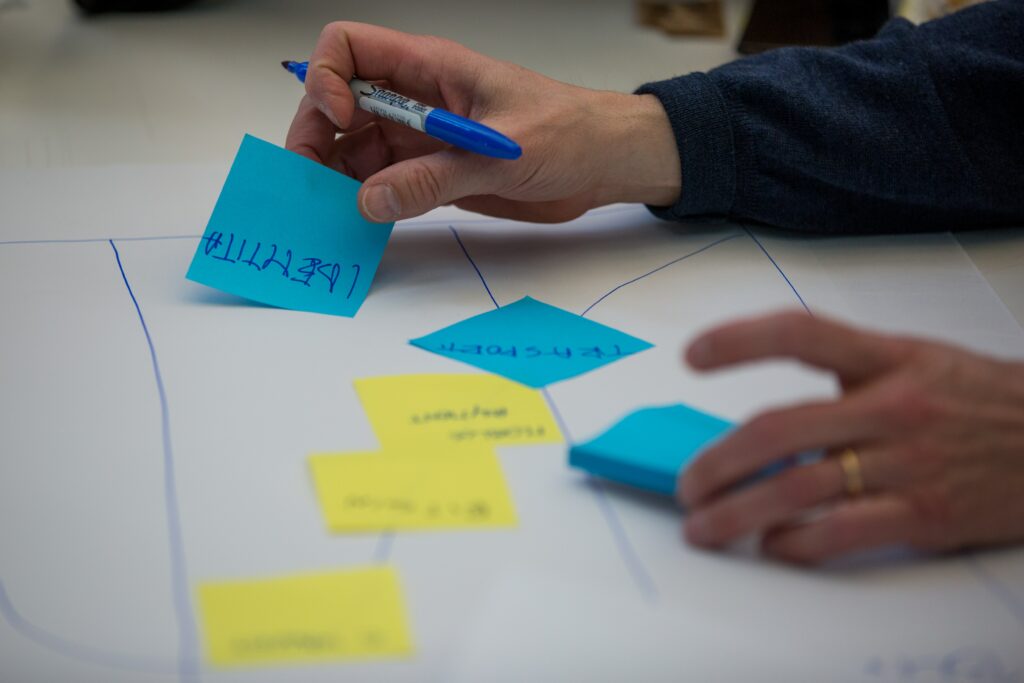Card Sorting, the technique for an optimal web structure

Card Sorting is an effective web structuring technique
We all want our websites to be well organized and structures so that our user quickly find what they are looking for. One of the main forms of structuring, if not the most important, is the navigation bar whit the main categories of the website.
Today we show you a very useful technique used by the Ux philosophy and its Information Architects: Card Sorting.
What is Card Sorting?
Card Sorting is a user-centered research technique that aims to deduce the user`s mental models. They consist of presenting the subject with a series of disordered cards and asking him to group them in a way that seems more natural to him, by similarity. This will help you make the best decisions about the structure of any website. It is a technique that is on the rise and that is being used more and more.
What types of Card Sorting are there?
There are 2 types:
- The open card sorting: In this case, the user groups the cards associating them freely and forming the groups he wants. He will have to name the groups himself. It is a model that generates more responses and they tend to be very heterogeneous.
- Closed card sorting: In this case, the groups to which the cards must be associated are predefined. The user has to define which group each card associates with, but without the option to create new groups.

Over the years many variations have emerged, but we show you the most interesting.
- Collaborative Card Sorting: In this way, users work together with the same cards, grouping them together and reaching a consensus on how they should join. It is usually an open approach, where they also decide on how many groups to do and what names they will have. A model created by StartUp companies to reduce time and costs.
Why you use this technique?
We should not evaluate our own project ourselves, as our judgment is highly skewed due to:
- Our intimate relationship with the product
- the deep knowledge of the product
- Our mental models will be totally different from those of our key users
- the previous experiences condition us
- Our decisions will be conscious, and for this a clear unconditioned mental model is essential.
Therefore, we cannot trust our intuition, needs or motivations when defining a solution to structure our information model.
Participants
Keep in mind that the selection of participants has to be with your target users. It is ideal that you have defined archetypes.
Usually between 15 and 30 participants are selected to take the test, although Jacob Nielsen recommends only 15.
Why so many participants? In this case, as we are in a very generative moment and we do not know the mental models of the users, we need a variety of information to contrast in order to arrive at the solution.
Test preparation
The moment of truth has come and all participants have to be tested. It can be done in two ways:
- By virtual means: As for example with programs like Optimal Stort
- By physical means: Preparing a calm, neutral and well-lit environment.
We will take into account that the cards have to be all exactly the same, simple and they have to be delivered totally disordered.
With the medium chosen and the cards properly prepared, we begin
The test begins:
First, the participants are explained the objectives of the test and what they have to do (group cards with the similarity criterion). It should also be mentioned to the participant that they are not being evaluated, that they are only helping in a study and that they should think aloud.
Remember not to give more information than is strictly necessary so as not to condition the participant in their choices.

During the test:
Researchers often observe participants with great attention and note behaviors that may be relevant such as:
–Cards that generate doubts: That it costs to group or that they are not placed
-Cards that group together very quickly
In order for the researcher to know more about the behaviors of the users in the test, the user is asked to “think aloud.” This generates additional information that can be helpful.
After the test:
The results obtained will be analyzed in several ways.
Results that will be obtained:
- Qualitative: Above all, it covers the behaviors observed
- Quantitative: It is solved with different approaches such as tabulating data of the associations between cards, counting the number of times that two & nbsp; The same cards are grouped together and with the help of digital tools to apply the clustering algorithm.
Therefore, based on the analysis of the data collected and analyzed, a report with several sections will be prepared with the cardsorting test, results and recommendations to follow.
Is it economical?
It can be considered that the realization of the Card sorting test is an essential step to correctly base the decisions of the information architecture. It must be said that it is not exactly a cheap and time consuming technique. Even so, in most cases, card sorting is a very profitable investment of time and money.
Do you have few resources? To minimize the economic impact, it is advisable to use digital tools to carry out the test remotely and obtain the information automatically
So how does Card Sorting help us?
-Structure your information optimally.
-Favors findability.
-Ensures predictability.
-Hierarchize your content in a better way.
-Improves the user experience.
-Improves SEO and above all, it improves the user experience.
What if i don´t do Card Sorting? What can be the consecuences?
Clearly, it can be done without this method. But there have to be some minimums so that everything goes well. The consequences of launching a system with a poor information architecture can be very serious and very expensive to correct afterward in many cases. It is recommended to be very careful when structuring and prioritizing so that your product is successful.
In summary, we can say that we are facing one of the most important methodologies to structure and improve our website with the help of our users. Do you dare to try it? Sound like a useful technique? Do you know any better?



